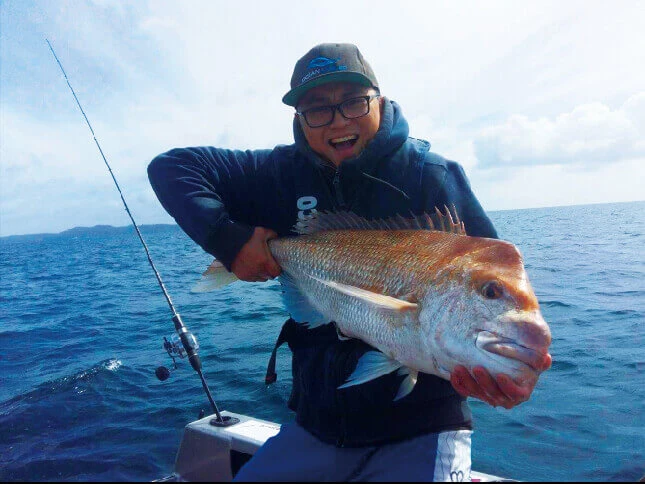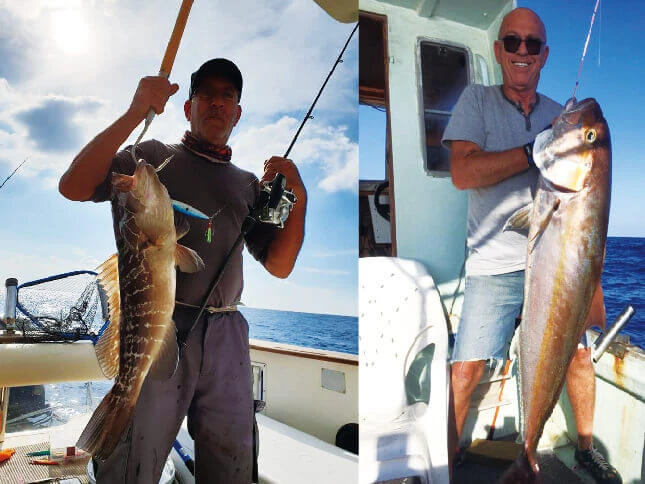Selecting a fishing rod that meets all your needs can be a challenging task.
We understand that everyone desires a rod that can withstand extreme pressure without breaking easily. With years of experience in rod manufacturing, TSUEN CHEN offers you some tips and guidelines to help you find the perfect fishing rod that meets your expectations!
When choosing a fishing rod, beginners should select one that suits their needs rather than assuming that a higher price means better quality. Many beginners rely on advice from experienced anglers when purchasing a rod, but they often encounter issues like rod breakage after use, mistakenly attributing the problem to poor quality. The real issue usually stems from the fact that seasoned anglers prioritize factors like the rod's feel (weight) and action (rigidity). Rods with these characteristics are typically made from high-carbon fiber, which is light, stiff, and brittle. This makes them less forgiving for beginners.
Therefore, it's recommended that beginners avoid the misconception that a higher price guarantees durability. Instead, they should start with a sturdier rod (with a thicker wall) that doesn't need to be too rigid. Once they are more accustomed to fishing and have refined their rod-handling techniques, they can consider upgrading to more advanced rods. Choosing the right rod can save beginners from unnecessary repair costs.
Advanced anglers are likely well-versed in the terrain, environment, water flow, and fish species of their fishing grounds. When selecting a rod, there are several key factors to consider, including length, action, weight, strength, feel, components, finish, brand, and price.
Length and Action: Putting brand preferences aside, the first priority is to find a rod with the appropriate length and action that suits the specific fishing conditions. After this, you can assess whether the feel of the rod meets your personal preferences.
Feel and Strength: In rods made using the same construction methods, there’s often an inverse relationship between "feel" and "strength." A rod that offers a better feel might compromise on strength, so it's essential to balance these aspects based on the size and habits of the target fish.
Components: The components should be selected based on the fishing setup being used. For example, the thickness and material of the line should be compatible with the size and durability of the rod’s guides. Certain fishing techniques that involve prolonged friction on the guides require more wear-resistant materials.
Finish and Price: Finally, the rod’s finish and price should align with your preferences and budget. While the finish is a matter of personal taste, it does contribute to the overall fishing experience.
By considering these factors, advanced anglers can select a rod that’s tailored to their specific needs and fishing environment.
Most fishing rods on the market today are primarily made of carbon fiber. The carbon fiber cloth used in fishing rods typically comes in various tensile strengths (moduli) such as 24T, 30T, 35T, 40T, 46T, 50T, and so on. Each tensile strength has different thicknesses and resin contents. The materials are formed through processes like rolling and heating.
We cannot deviate from the fundamental properties of carbon fiber materials. Higher tensile strength (T) fibers, while more expensive, offer better rigidity. However, they are also more brittle, have lower tolerance, and tend to exhibit a clean break. These materials are generally used in rods requiring lightness, stiffness, and rigidity, such as surf rods, casting rods, and stream rods.
Conversely, lower tensile strength carbon fibers have better strength and flexibility but generally result in a softer overall action and a rougher break. These are typically used in rods like casting rods, flatfish rods, and boat rods.
Comparison of Carbon Fiber Fabrics
Rigidity:Higher T is better; lower T is worse.
Strength:Higher T is worse; lower T is better.
Flexibility:Higher T is worse; lower T is better.
Rebound Power:Higher T is better; lower T is worse.
Price:Higher T is more expensive; lower T is cheaper.
Break Surface:Higher T has a cleaner surface; lower T has more fraying.
1. Safety Warning: Fishing rods are almost always made of 100% carbon fiber. Avoid using them during thunderstorms or near high-voltage power lines to prevent the risk of electric shock.
2. Wear a Life Jacket: When fishing from the shore or a boat, always wear a life jacket that meets flotation standards.
3. Be Cautious While Casting: When casting, be aware of your surroundings and ensure there are no people nearby to prevent injuries from sinkers or hooks.
4. Protect the Environment: Everyone has a responsibility to care for the environment. After fishing, please keep the area clean and contribute to being a responsible angler.
1. Preventing Paint Peeling
If a rod is stored in a sealed, damp, and unclean environment, moisture can migrate into the rod and cause the paint to peel or blister. To prevent this, thoroughly wipe off any moisture after use, store the rod in a cool, dry, and well-ventilated area, and apply rod maintenance oil to the rod's surface once dry.
2. Preventing Accessory Oxidation and Rust
After fishing, rinse the rod and its accessories with clean water to remove any residual salt. Wipe everything dry with a cloth and place it in a well-ventilated area to air dry naturally. Failure to do so can result in salt corrosion on the accessory coatings and metal parts.
3. Maintenance Considerations
When performing maintenance, avoid using brushes, toothpaste, gasoline, alcohol, or any organic solvents to clean the rod, as these can damage the rod’s finish.
In addition, the craftsmanship of the rod manufacturer also affects the quality of the rod. The paint finish must be even and smooth, each section of the rod must be no cracks at both ends, and the rod should be straight without any warping.





